|
3. Trim the unused portion of the CDC feather.
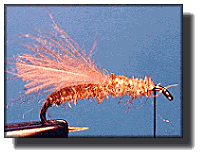
4.Dub the second half of the body as shown.
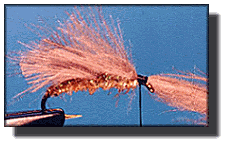
5. Tie in a second set of CDC feathers for a wing. Adjust the length of
this second wing to stop just short of the hook bend.
6. Trim the CDC that extends over the hook eye.
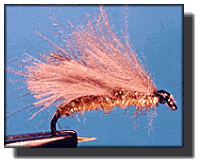
7. Build a head, whip finish and cement the head.
Our last fly this week will be a CDC Suspended Midge Pupa.
List of materials: CDC Suspended Midge Pupa
Hook: Light wire curved dry fly or nymph. Tiemco 2302, Mustad
80050BR, Tiemco 200R or equivalent. Size: 16 to 24.
Thread: 6/0 to 10/0 Gudebrod or equivalent, black, red, olive or color
to match the natural.
Tail: Several short strands of antron yarn. (optional)
Body: Tying thread.
Rib - Fine copper wire.
Wing: One or two CDC puffs.
Collar: Coarse dubbing, peacock herl or ostrich herl.
Tying Steps
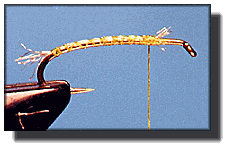
1. Start the thread and tie in a short tail (optional) as shown.
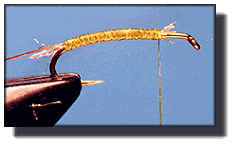
2. Tie in a copper wire, letting it hang past the hook bend. Build a
smooth body of tying thread as shown.
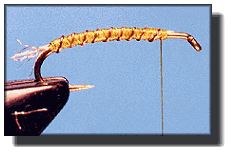
3. Wrap the wire forward, evenly ribbing the body. Tie off the wire and
trim it.
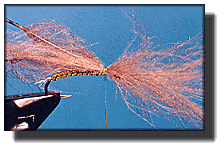
4. Tie in several puffs of CDC with two loose wraps of thread. The tips
of the CDC puffs should extend over the hook eye.
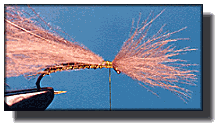
5. Adjust the length of the wing. It should be 1/2 to 3/4 the length of
the body.
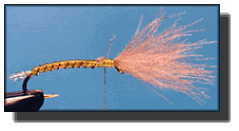
6. Tie off the CDC and trim the CDC that extends over the body.
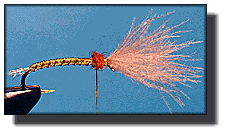
7. Dub a collar over the thread wraps you used to secure the wing. You
can use peacock or ostrich herl here if desired.
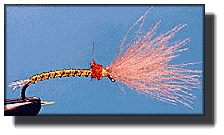
8. Whip finish, trim thread and cement. Your finished fly will suspend
vertically like a natural emerging midge.
There are many patterns that can be adapted to CDC puffs. Some tyers
have added CDC to beadhead nymphs to capitalize on the tiny stream of
bubbles that are released when the CDC is pulled under the water by the
weight of the bead. Others have used CDC as a source of additional
buoyancy under the traditional wing in elk hair caddis and other hair
wing patterns.
There are a few who try to use CDC as a dubbing material. I suppose
there might be some advantages to this, but if the tiny barbules are
matted down by the tying thread or wax, the CDC is no more buoyant than
marabou. I suspect a few companies have tried to capitalize on the
popularity of CDC in some circles by exploiting the lack of knowledge
many tyers have concerning CDC and what makes it work. After all, if CDC
floats, it should make a good body, right? Well, not if you know what
property of the CDC makes it so buoyant.
These are just a few short examples of CDC flies. Do some experimenting
on some other patterns, replacing wings or adding to existing wing
materials. I've substituted CDC for elk hair in my sparkle caddis
patterns with great results. If you have an imagination, I'm sure you
can find many more uses for this great fly tying material.
See ya next week - Remember, I'm always happy to answer
your questions, feel free to
email me. ~ Al Campbell
Fly Tying Archives
|






















